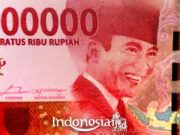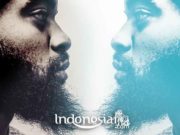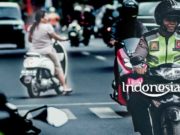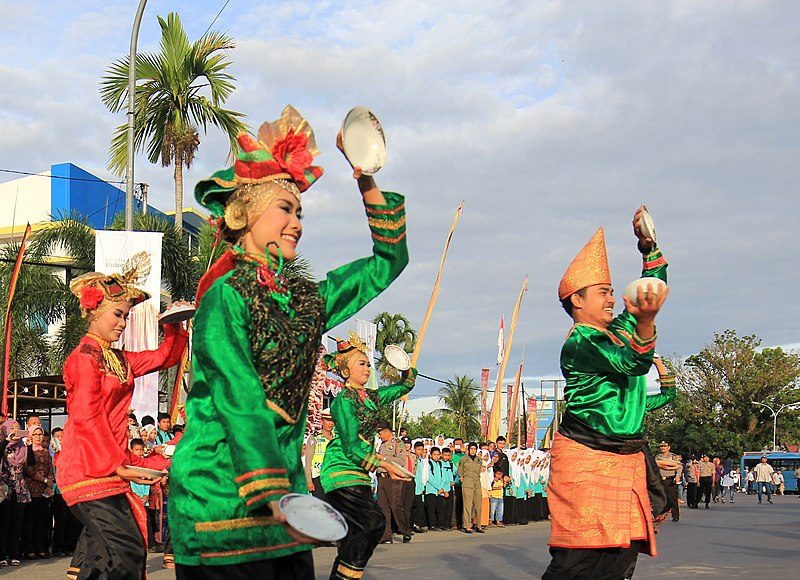Indonesia has several traditional dances and one of them is the Remo dance. Remo dance is a cultural heritage art from the province of East Java. This traditional dance is often performed in welcoming events for guests of honor, especially in Jombang. Because indeed, the Remo dance comes from a village in Jombang. On several occasions, this dance is often performed, especially on national anniversaries and to open Ludruk art events.
Although this dance originates from Jombang, the Remo dance or often called Remong Dance is also known in several other areas in East Java. Such as Surabaya, Malang, Mojokerto, Nganjuk and several other areas. This is none other than because of the culture they have, there are many similarities so that, this cultural art, has become so popular, especially in East Java.
Remo dance is indeed full of historical values that are thick with a philosophy that is so close to it, that it makes this typical dance from East Java has its own uniqueness. The following is a brief review of the complete Remo Dance.
Remo Gagrak Anyar Dance
History of Dance Remo and Its Development
Historically, Remo Dance was originally created by street dance artists who came from Jombang, especially from Ceweng Village, Diwek District, Jombang. This dance itself tells the story of the struggle of a brave prince on the battlefield.
Initially, this dance was introduced by traveling in the streets or the term ‘singing’. But now this dance is often used to open Ludruk art events to welcome guests of honor.
As time goes by, the Remo dance has now been widely recognized by the public, especially in several neighboring areas of Jombang. So that the Remo dance also experiences cultural acculturation with the local area.
Therefore, it is not surprising that Remo dance has many styles of clothing, such as Surabayan, Jombang, Sawunggaling, and also Malangan. The dance clothing blends with the surrounding culture in which the dance develops.
Remo Dance Philosophy
In every Remo Dance movement contains deep philosophical values. This can be seen in some of its movements, such as the ‘gedrug’ movement, which is the movement of the foot stomping on the ground. This movement means that every human being must have awareness of every life on earth.
Then also the movement “Gendewa” which means that humans have an agile attitude like an arrow that is released from a bow. There is also the ‘Tepisan’ movement which relies on dexterity and precision of the hand which means one with the forces of nature. As well as the Ngore Remo movement, with a self-preening philosophy which means improving oneself physically.
Not only is the dance interesting, its history and philosophy are also interesting to know. But there is also something that is no less interesting to learn, namely the concept. Through this concept, the overall picture of the dance will be easier to understand. That way knowledge about Remo dance will increase.
Remo Dance composition
In order to get to know more about its characteristics, you must first know about the concept of the dance. The concept of dance includes several aspects, namely dancers, dance movements, clothing used, and so on. Check out a more in-depth review of the following Remo dance concept.
1. Dancer
Initially, this Remo Dance was performed by male dancers. Because the story itself tells the story of a prince with a strong and handsome character, so the character of a man’s masculinity is needed. Moreover, the character of the dancer is very closely related to its historical value.
But over time and times have changed, the Remo dance is now not only performed by men, but women can also perform it. So that a new dance emerged, known as the Remo Putri Dance. Although the name carries a feminine element, conceptually the dance has almost no different dance movements. It’s just that because the dancer is a woman of course the aura of the dance is different.
2. Movement
One of the distinctive movements of the Remo dance is the dynamic stomping footwork. Usually the feet of the dancers wear anklets with small bells which make the dance even more unique. Not only that, but the stomping foot movements made the bells ring, creating a muted sound with the accompanying music. Apart from footwork, there is also the ‘sampur’ movement, which is slashing the shawl, head movements and the dancer’s stance as well as facial expressions.
3. Dancer’s Clothing
The most interesting concept in the Remo dance is the clothes the dancers wear. The clothes are quite varied depending on the region that popularized it. Some of the Remo dancers’ clothing includes Gaya Sawunggaling, Surabayan, Jombangan and also Malangan.
However, even though each region has its own fashion style, there are some accessories that are always used. Namely, a special red headband, clothes with long sleeves, knee-length black trousers, typical coastal batik cloth, setagen, keris, scarves, and also bell anklets. But for women’s costumes, it is a little different, there are several accessories added, such as a bun, a band that is worn on the knee, a black mekak to cover the chest and a scarf.
4. Accompaniment Music
A traditional dance will not be complete without the presence of accompanying music. So, for the show to be more perfect, dancers must also be able to harmonize dance movements with the accompanying music. Remo dance itself is usually accompanied by the strains of gamelan consisting of the successor bonang, bonang barung, xylophone, saron, gender, flute, slentem siter, kethuk, kempul, kenong, and also gong.
While the accompaniment rhythm usually uses the tune rhythm or tropongan and July-July pieces, but there are also those who use Walangkekek, Krucilan, Gedok Rancak music and repertoire with new creations. Plus the stomping foot movements, so that the sound of the anklet bell rings can be in harmony and create a harmonious blend.
5. Stage setting
Remo dance stage backdrops are usually quite dynamic, depending on the event being held. If it is performed at the opening of the Ludruk art performance, the stage background will also use the Ludruk stage background. Over time, the Remo dance is also used as a welcoming dance for the guest of honor so that the stage background also adjusts according to the event being held.
Conclusion
Remo dance is a traditional dance from East Java, especially Jombang and the surrounding areas. This dance with the theme of heroism has a very close relationship with the historical values of the local people’s struggles which are poured into the dance as encouragement.
In the development of the era, Remo dance has changed which is now more often used for guest welcoming dances. However, the concept and meaning of this dance did not change significantly. Each region does have different characteristics in performing the Remo dance, but all of them should be appreciated as part of preserving the cultural heritage of the ancestors which should be preserved by every citizen. So, are you interested in trying to learn Remo dance? Come on, get useful information and articles from Indonesiar.com.































